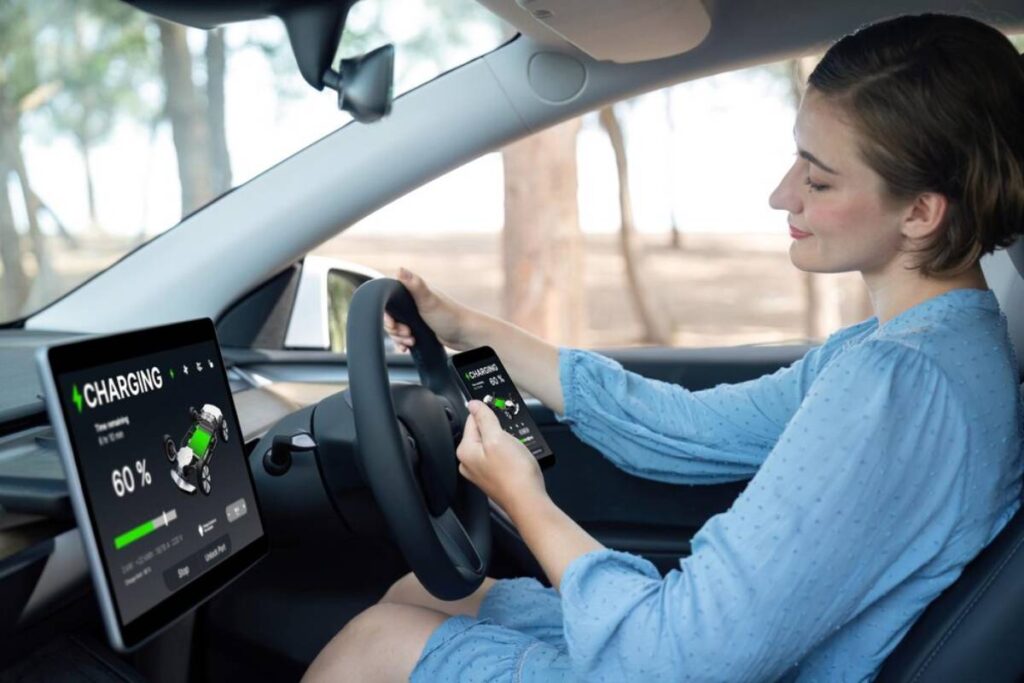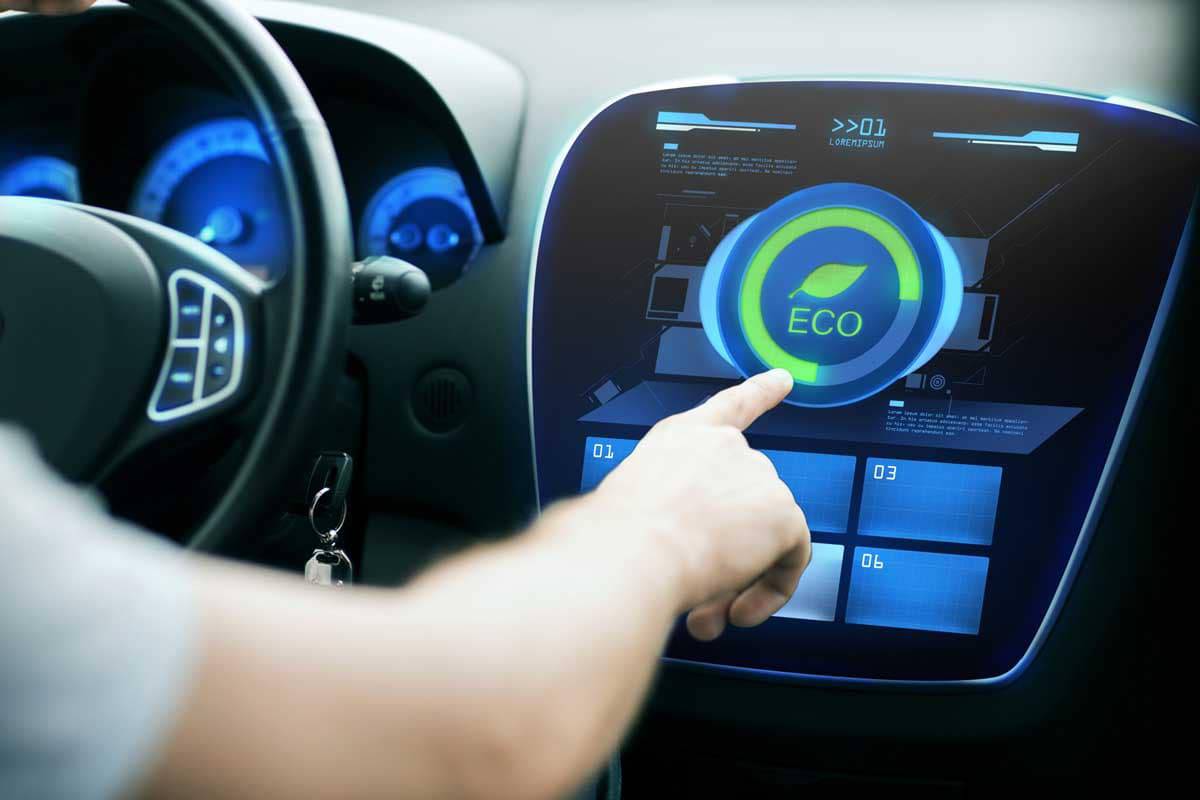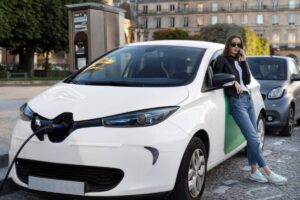The Automobiles & Vehicles Blog

How to Test Drive an Electric Vehicle Like a Pro
An electric vehicle test drive isn’t just about how the car feels—it’s about discovering how it fits into your life.
Our team found that EV shoppers who approach their test drive with a clear plan make more informed decisions, feel more confident post-purchase, and avoid common pitfalls. Driving electric is a different experience—from regenerative braking to torque delivery—so knowing what to expect (and what to look for) matters.
This guide will help you test drive an electric vehicle like a pro—evaluating everything from handling to charging, cabin tech to real-world usability. Whether it’s your first EV or your next upgrade, you’ll walk away knowing if it’s the right fit.
Pro Tip: Don’t just test the drive—test the lifestyle. Charging, comfort, controls, and convenience matter just as much as torque.
Quick Guide: EV Test Drive Checklist
- Check cabin layout and seating comfort before driving.
- Familiarise yourself with the touchscreen, controls, and menus.
- Evaluate acceleration, braking, and regenerative settings.
- Drive in different settings: city, highway, stop-and-go.
- Test visibility, parking ease, and turning radius.
- Review infotainment, climate control, and voice commands.
- Ask about charging options, warranty, and app integration.
Important: You’re not just testing the vehicle—you’re test-driving your future daily experience.
Step 1: Prep Before the Drive
A great test drive starts before you turn the key (or push the button).
Bring With You:
- Driver’s licence
- Notebook or checklist
- Questions about charging and range
- Smartphone to test Bluetooth/Apple CarPlay/Android Auto
Things to Ask the Salesperson:
- What’s the real-world range vs rated range?
- What charging ports are included?
- Is the battery cooled/heated for longevity in your climate?
- What kind of maintenance or service does the EV require?
Tip: If possible, schedule a longer test drive or even a 24-hour demo—some dealers and manufacturers now offer extended trials.
Step 2: Inspect Interior Comfort and Design

Before setting off, sit in the driver’s seat and explore the cabin.
Evaluate:
- Seat comfort and adjustability—especially for long drives
- Driver visibility—windshield, mirrors, blind spots
- Rear passenger legroom and headroom
- Boot space and storage—is there a front trunk (frunk)?
- Build quality—materials, finishes, panel gaps
Design Tip: Scandinavian-inspired EVs often feature minimalist dashboards. Make sure you’re comfortable with touchscreen-heavy controls.
Step 3: Learn the Infotainment and Interface
Many EVs rely heavily on digital interfaces. You’ll want to know how intuitive (or not) the system is.
Try Out:
- Navigation system and EV charging map integration
- Bluetooth pairing and smartphone mirroring
- Climate controls—are they physical buttons or screen-based?
- Customising driver profiles or seat positions
- Voice command responsiveness
Test: How many steps does it take to change climate settings or adjust regen braking? Complexity can be a dealbreaker.
Step 4: Assess Acceleration and Torque Delivery
EVs have instant torque—that “snap” you feel as soon as you accelerate. But smoothness, noise levels, and throttle tuning vary.
Things to Observe:
- How quickly does it respond when you press the accelerator?
- Is power delivery smooth or jerky?
- Does it feel balanced at different speeds?
- How loud is the cabin at full acceleration?
Pro Tip: Take the car on a short open stretch of road and test 0–60 km/h and 60–100 km/h acceleration.
Step 5: Experiment With Regenerative Braking
Regenerative braking recharges the battery as you slow down—but every EV does it differently.
Ask:
- Is regen adjustable?
- Can you drive with one pedal only?
- How aggressive is the slowing when you lift your foot?
Try All Modes: Test full regen, mild regen, and coasting to see what suits your driving style.
Step 6: Evaluate Ride Comfort and Handling
Take the car through a variety of driving conditions.
Driving Conditions to Include:
- City traffic: Low-speed handling, stop-start, manoeuvrability
- Highway cruising: Noise levels, acceleration at speed, lane stability
- Hills or inclines: Power delivery under load
- Parking test: Parallel and tight-space manoeuvring
Note:
- How well does it handle bumps or uneven roads?
- Is the steering tight and responsive or overly light?
- Does the ride feel planted and composed?
Step 7: Test Visibility, Cameras, and Parking Features
With new camera-based mirrors and large blind spots in some EVs, visibility is key.
Evaluate:
- Rear window visibility and mirror layout
- Backup and surround-view camera clarity
- Parking sensors and automated parking (if available)
- Lane-keeping assist accuracy
Pro Tip: Try a three-point turn in a tight space to feel how the car handles at low speed.
Step 8: Play With Drive Modes and Tech Features

EVs often include multiple drive modes (e.g. Eco, Normal, Sport) and tech like adaptive cruise or lane-centring.
Things to Try:
- Switching between drive modes—does the car feel different?
- Adaptive cruise control in traffic—smooth or abrupt?
- Lane assist—subtle support or overbearing correction?
- Range estimator accuracy when switching modes
Important: See how tech supports you without feeling intrusive or gimmicky.
Step 9: Ask the Right Post-Drive Questions
Don’t just thank the salesperson—get the answers that matter most.
Ask About:
- Battery warranty (typically 8 years or 160,000 km)
- Software updates—are they over-the-air?
- Cost of a home charger and installation
- Resale value trends for that brand/model
- Service intervals and dealer support network
Charging Tip: Ask to see the actual charging port and what cables/adapters come included.
Bonus: EV Test Drive Checklist (Printable Summary)
| Feature | What to Evaluate |
| Comfort | Seating, visibility, headroom, boot space |
| Infotainment | Touchscreen responsiveness, ease of use, voice control |
| Acceleration | Response, smoothness, real-world feel |
| Regen Braking | Modes available, ease of use, natural feel |
| Driving Modes | Eco vs Sport, range changes, handling |
| Ride Quality | Noise, suspension, handling, feedback |
| Tech | Cruise control, parking assist, lane support |
| Charging | Speed, access, hardware included, home setup |
| Warranty | Battery, motor, software support |
Warning: A test drive that’s too short—or done entirely in showroom surroundings—won’t reveal much. Push for a route that matches your real-life driving profile.
Frequently Asked Questions
1. How is driving an EV different from a petrol car?
EVs are quieter, have instant torque, and often use regenerative braking. They’re smoother and simpler—but may lack traditional feedback if you’re used to sporty petrol vehicles.
2. What is one-pedal driving?
It’s when lifting off the accelerator slows the car significantly using regenerative braking. Many EVs offer this mode—some drivers love it, others need time to adapt.
3. Should I try multiple models before choosing?
Yes. Each EV has a distinct driving experience. Try different brands, drivetrains (FWD, RWD, AWD), and sizes to find the best fit.
4. How long should an EV test drive be?
Aim for 30 minutes minimum. Ideally, test across various driving conditions and take notes on comfort, tech, and usability.
5. Can I test charging during a test drive?
Some extended trials include charging. Otherwise, ask to see the charging cable in action and verify charge speeds with the sales team.
Drive With Intention, Decide With Confidence
Test-driving an electric vehicle is about more than performance—it’s about lifestyle alignment. From how the car feels under your hands to how it supports your day-to-day, your experience behind the wheel should feel effortless and intuitive.
With a focused checklist, thoughtful observations, and clear questions, you’ll move from uncertain to confident—and choose the EV that truly fits your world.









